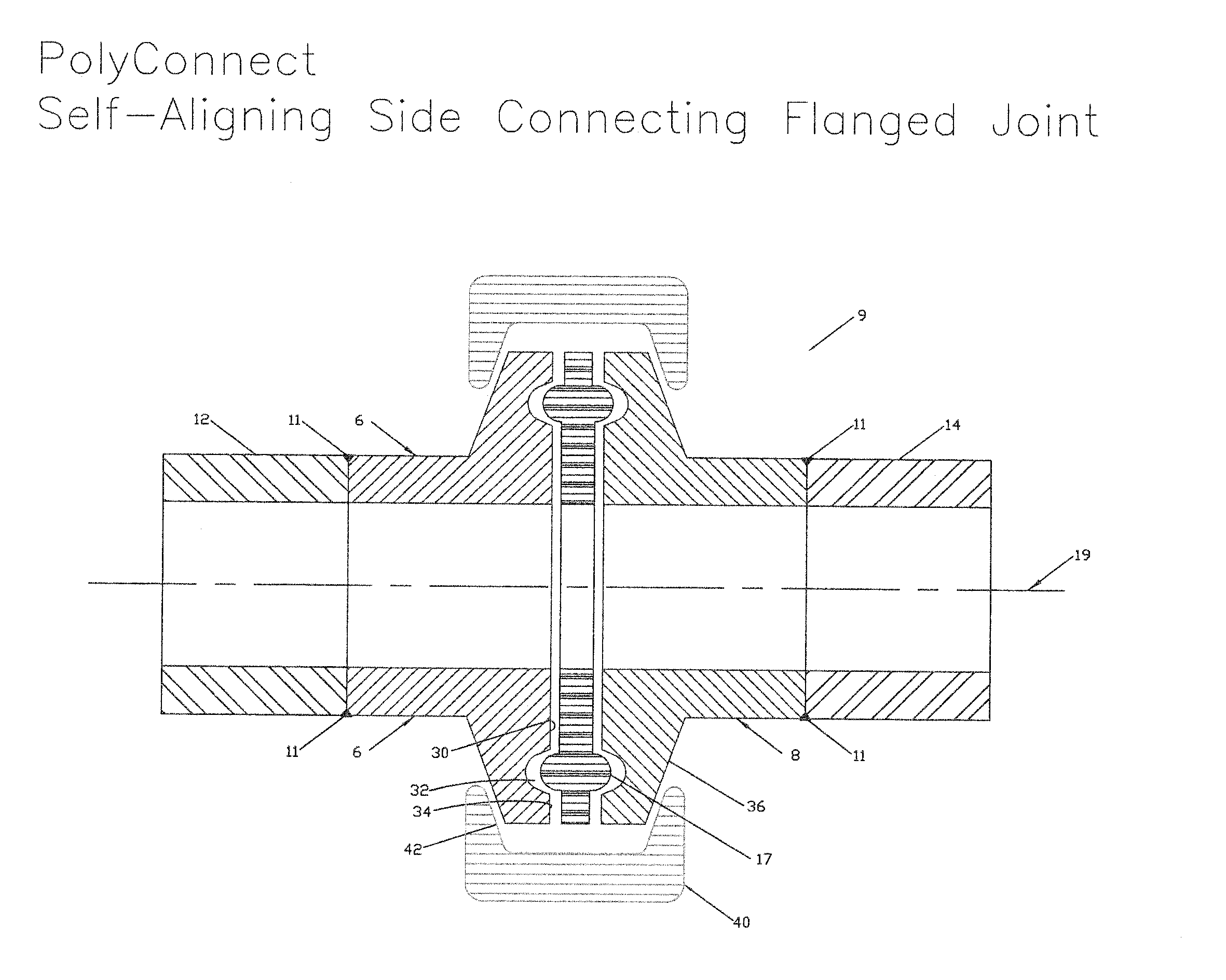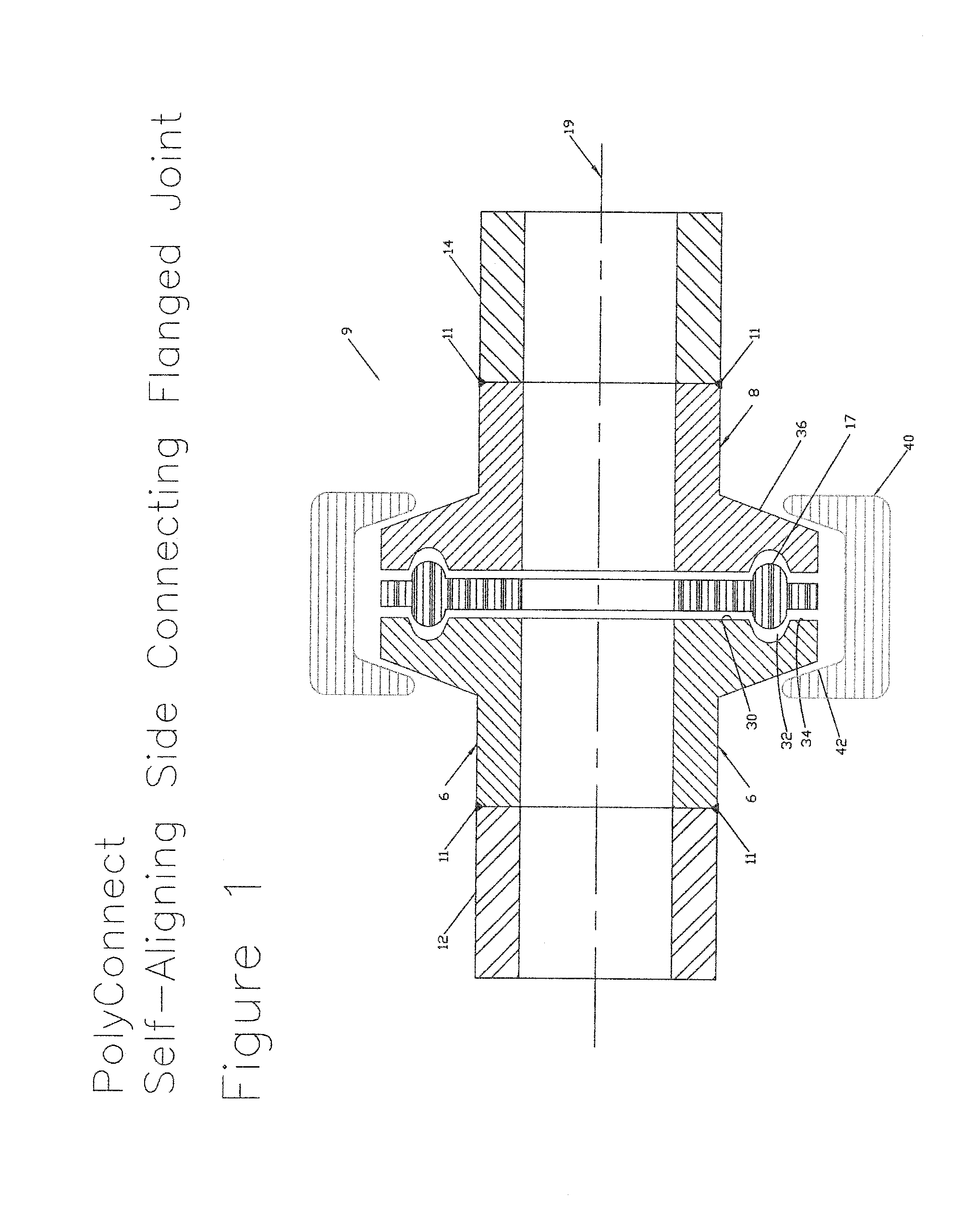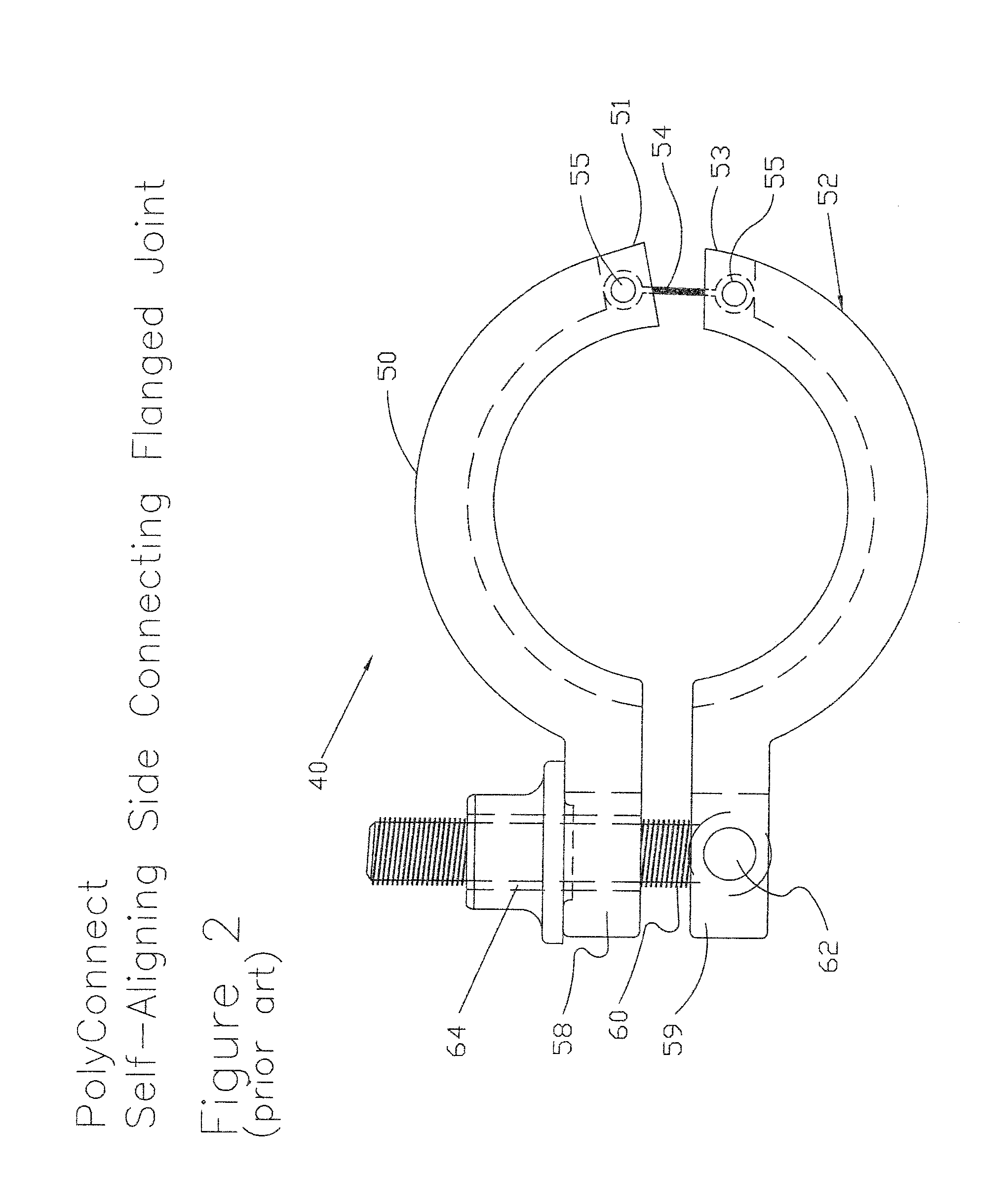Self-aligning flanged joint and alignment rim therefor
a flanged joint, self-aligning technology, applied in the direction of fluid pressure sealed joints, cable terminations, mechanical equipment, etc., can solve the problems of not being able to meet one or more stringent requirements for piping and joint systems that might be acceptable for general chemical or industrial processing, and not being able to use materials in aseptic joint systems. , to achieve the effect of reducing maintenance costs and manufacturing downtime, and being convenient to disassembl
- Summary
- Abstract
- Description
- Claims
- Application Information
AI Technical Summary
Benefits of technology
Problems solved by technology
Method used
Image
Examples
Embodiment Construction
[0041]Referring to FIG. 3A there is depicted an embodiment of a flanged joint system of the invention. Joint 9 connects generally first and second cylindrical tubes 12, 14, which are welded 11 to first and second flanges 16, 18 (also known as ferrules). The terms “tube” and “pipe” are used herein throughout interchangeably and synonymously. Alternatively, the tubes may be attached by any other suitable method, non-exclusively including brazing, soldering, threaded connection, or any other similar technique that provides a durable, leak-resistant connection. Flanges 16 and 18 adjoin in end-to-end relationship about a common center axis 19. The flanges are substantially identical and have mating surfaces generally perpendicular to axis 19. Opposite the mating surfaces are clamping surfaces that include tapered portions 36, which cooperate to form a generally frustoconical outer peripheral surface when the flanges are juxtaposed. The joint is sealed using gasket assembly 20, which comp...
PUM
 Login to View More
Login to View More Abstract
Description
Claims
Application Information
 Login to View More
Login to View More - R&D
- Intellectual Property
- Life Sciences
- Materials
- Tech Scout
- Unparalleled Data Quality
- Higher Quality Content
- 60% Fewer Hallucinations
Browse by: Latest US Patents, China's latest patents, Technical Efficacy Thesaurus, Application Domain, Technology Topic, Popular Technical Reports.
© 2025 PatSnap. All rights reserved.Legal|Privacy policy|Modern Slavery Act Transparency Statement|Sitemap|About US| Contact US: help@patsnap.com



